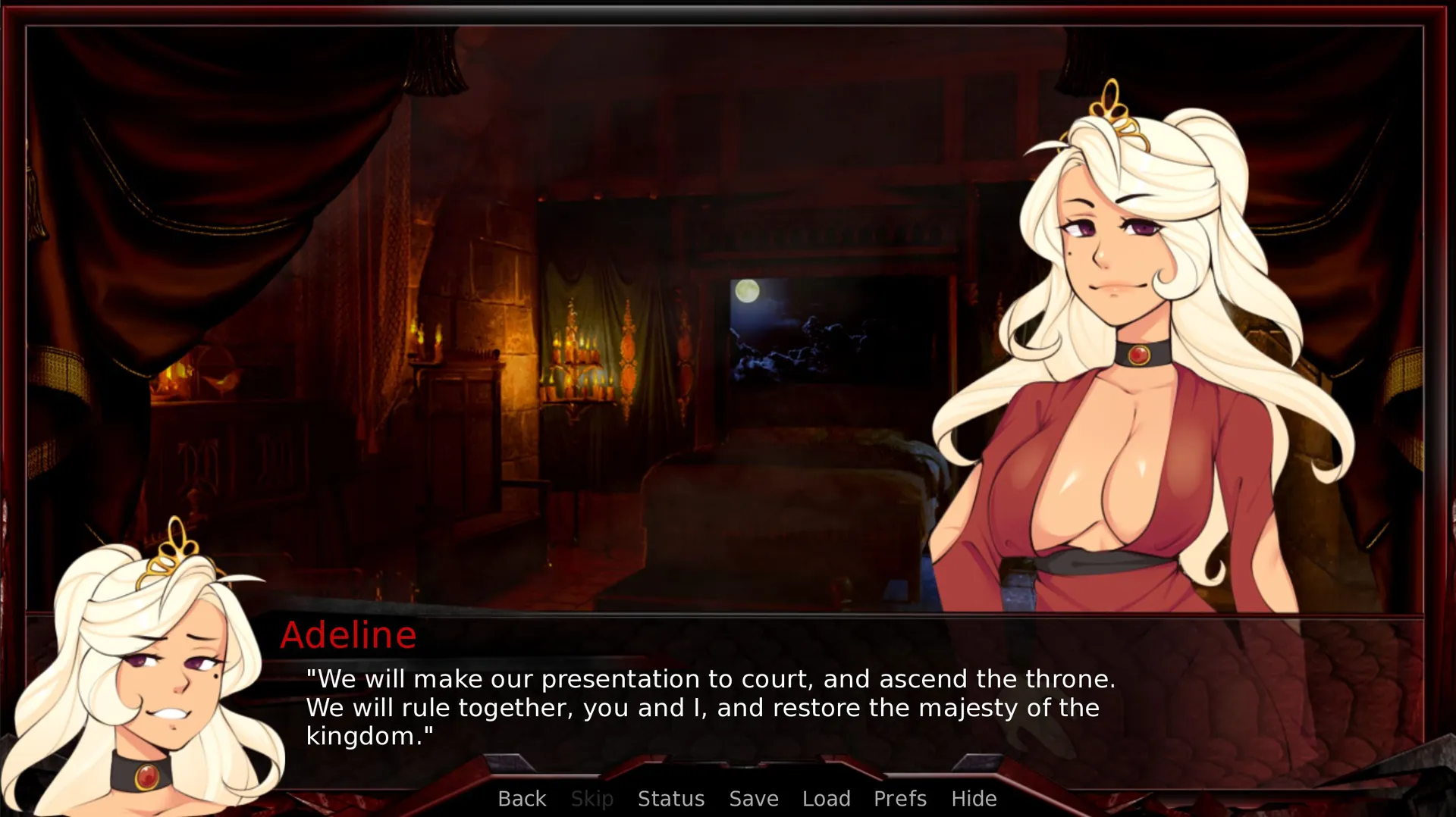
Kaiju Princess review
Master the time management gameplay, story elements, and strategic mechanics of this unique simulation experience
The Arrogant Kaiju Princess and The Detective Servant stands out as a distinctive time management simulation that blends strategic gameplay with an engaging narrative. This game invites players into a colorful cohabitation experience where you serve an alien princess with a commanding personality. Unlike typical management games, this title successfully balances multiple gameplay systems while weaving in character development and relationship mechanics. Whether you’re drawn to simulation games, story-driven experiences, or unique narrative premises, understanding what this game offers helps you decide if it’s worth your time. This comprehensive guide explores every aspect of the game, from core mechanics to character dynamics.
Gameplay Mechanics and Time Management System
Let me tell you about the first time I played The Arrogant Kaiju Princess and The Detective Servant. I thought, “How hard can it be? Keep a giant princess happy and clean her apartment?” 🤔 Famous last words. By day three, my apartment was a disaster zone, the princess was sulking in a corner, and I hadn’t met my city destruction quota. I was overwhelmed. The game’s genius—and its initial challenge—lies entirely in its deceptively deep time management gameplay. You’re not just a servant; you’re a strategic coordinator for a divine-level tantrum.
This chapter is your survival guide. We’re diving deep into the core systems that make this game tick, from the relentless daily management loop to the delicate art of character mood management. Mastering this isn’t just about winning; it’s about finding a rhythm that lets you enjoy the story without burning out. Let’s get your strategy in order. 💪
How the Daily Management Loop Works
🕒 Every morning in the game, you wake up with one goal: survive the day without triggering a kaiju-sized meltdown. The daily management loop is the heartbeat of the entire experience. It’s a relentless cycle of assessing needs, allocating your limited time and energy, and dealing with the consequences. Think of it as a high-stakes juggling act where the balls are your responsibilities and the pins are the princess’s volatile emotions.
A typical day starts with a quick assessment. You check three primary meters: the Princess’s Mood, the Apartment Cleanliness, and the City Destruction Progress. Your job is to decide which fires to put out first. I learned this the hard way. I once spent a whole morning cleaning the apartment to perfection, only to realize the princess was so bored and grumpy that she refused to do any destruction work that afternoon. The entire day was wasted! 😫
The loop is structured, but your choices within it are not. Here’s the basic flow:
* Morning Assessment: Check all status bars and plan your day.
* Resource Allocation: Decide how to spend your Energy and money.
* Task Execution: Perform actions like cleaning, working a part-time job, or soothing the princess.
* Consequence Phase: See how your actions (or inactions) affect the princess’s mood and your progress.
* Evening Wind-down: Use any remaining resources for minor tasks or rest.
The beauty of this apartment maintenance simulation is how it intertwines with everything else. A messy apartment directly impacts the princess’s mood, which in turn affects her willingness to go out and fulfill her destruction quota system. It’s a closed ecosystem of cause and effect. Once you understand this pattern of importance—that mood is often the linchpin—the game becomes significantly easier. You stop reacting and start proactively orchestrating your day.
To help you visualize the constant triage you’ll be performing, here’s a breakdown of the daily tasks you’ll be balancing:
| Management Category | Importance Level | Typical Energy Cost | Impact on Gameplay |
|---|---|---|---|
| Character Mood Management | Critical | Medium-High | Directly affects cooperation and destruction quota progress. A happy princess is a productive princess. |
| Destruction Quota System | High | High | Primary story progression mechanic. Failure has significant negative consequences. |
| Apartment Maintenance Simulation | Medium | Low-Medium | Indirectly affects mood. Lets you earn small amounts of money and prevents mood penalties. |
| Part-Time Work | Variable | High | Essential for earning money to buy items that ease other management tasks. |
Pro Tip: Your first action every morning should be to check the princess’s mood. A grumpy kaiju is an uncooperative kaiju, and your entire resource allocation strategy for the day will depend on it.
Energy Management and Resource Allocation
⚡ If the daily loop is the heartbeat, then the energy system mechanics are the limited blood supply keeping everything running. You only have so much energy per day, and every single action—from mopping a floor to cheering up your royal charge—costs a chunk of it. Learning to manage this pool is the single most important skill for mastering the time management gameplay.
Early on, I made the classic mistake of trying to do everything at once. I’d clean two rooms, tell a few jokes, and then sprint to a part-time job. By lunchtime, my character was exhausted, and I’d lost the ability to respond to any emergencies for the rest of the day. 🙃 This is the core challenge: your ambition is always larger than your energy bar.
Your main resources are:
* Energy: The ultimate limiter. Spend it wisely.
* Money: Earned from part-time jobs or finding hidden items in the apartment. Used to buy food, gifts, and cleaning supplies.
* Time: The day is divided into segments (Morning, Afternoon, Evening). Some tasks or events are only available at certain times.
The energy system mechanics force you to make hard choices. Is it worth spending 40% of your energy on a high-paying job, leaving you with barely enough to cook a meal for the princess? Or should you do a cheaper cleaning action to save energy for a crucial story conversation later? This is where your resource allocation strategy is born. It’s not about doing more; it’s about doing what matters most, efficiently.
💰 Money is your key to bending the energy rules. This is a game-changer. While you start off scraping by, you’ll soon learn that purchasing items is a strategic investment. For example:
* Buying a better mop might reduce the energy cost of cleaning by 25%.
* Stockpiling the princess’s favorite snacks gives you a low-energy option to boost her mood in a pinch.
* A new book might keep her entertained for an afternoon, freeing you up to earn money.
The interplay between earning money and spending it to save energy creates a fantastic strategic layer. The management aspect is ‘quite decent’ precisely because of this depth. It’s not just busywork; it’s a constant puzzle of optimization that keeps your brain engaged through the early hours as you learn the most efficient pathways.
Balancing Multiple Objectives and Priorities
🎯 This is where everything comes together. Balancing your objectives is the final test of your managerial skills. You’re not just managing a system; you’re managing a personality with god-like powers, and she does not care about your to-do list. The core challenge of the Kaiju Princess experience is that all your tasks are screaming for attention at once.
The three major pillars you’re constantly balancing are:
1. The Princess’s Well-being (🤴): This encompasses character mood management through conversation, gifts, and food. A happy princess is more likely to agree to go out and destroy things, and she’ll be less likely to throw a fit that ruins your carefully laid plans.
2. The Home Front (🏠): The apartment maintenance simulation is a background hum of necessity. Let it get too dirty, and you’ll get a stacking mood debuff on the princess. It’s a constant, low-level threat that must be kept in check.
3. The Day Job (💥): The destruction quota system is your primary source of story progression. It’s also the most energy-intensive activity for both you and the princess. Failing it isn’t an option.
So, how do you prioritize? There’s no single answer, but your resource allocation strategy should be fluid. Here’s a personal case study from my own playthrough: I had a major destruction quota due, but the princess was in a terrible mood. I knew forcing her would fail. So, I sacrificed a day. I used almost all my energy and that day’s part-time earnings to buy her favorite luxury item and deep-clean the apartment. The next day, her mood was “Ecstatic,” and we smashed the quota in record time. Sometimes, you have to go slow to go fast. 🚀
The game becomes easier once you internalize this hierarchy of needs, but be warned—it can become repetitive in later stages if you don’t actively seek out the story beats. You might find yourself stuck in a “clean, work, destroy, sleep” cycle. The trick to avoiding this burnout is to remember why you’re doing all this: to unravel the story. Use your efficient management not just to meet quotas, but to create windows of opportunity to talk to the princess and learn her secrets.
Embrace the chaos. Some days, the best-laid plans will be thrown out the window by a random story event. The mark of a true master isn’t a perfect plan, but the ability to adapt a broken one. Your understanding of the daily management loop and the energy system mechanics gives you the tools to pivot without panicking. You stop being a servant struggling to keep up and start being the director of your own chaotic, delightful, and strangely heartwarming kaiju drama. 🎬
The Arrogant Kaiju Princess and The Detective Servant successfully demonstrates how management games can deliver engaging experiences through thoughtful design and meaningful player choice. The game excels at creating a satisfying gameplay loop where daily tasks feel purposeful rather than tedious, at least through the early and middle stages of play. The narrative framework provides context that elevates the management mechanics beyond simple number-crunching, giving players reason to care about their decisions and their impact on the story. While the tsundere character archetype may not appeal to everyone, the game’s willingness to let players focus on gameplay elements they enjoy shows respect for diverse player preferences. Whether you’re seeking a unique simulation experience, an engaging story with character development, or a game that successfully blends multiple genres, The Arrogant Kaiju Princess and The Detective Servant offers something distinctive in the gaming landscape. Consider diving in if you appreciate management mechanics paired with narrative depth and character-driven storytelling.













